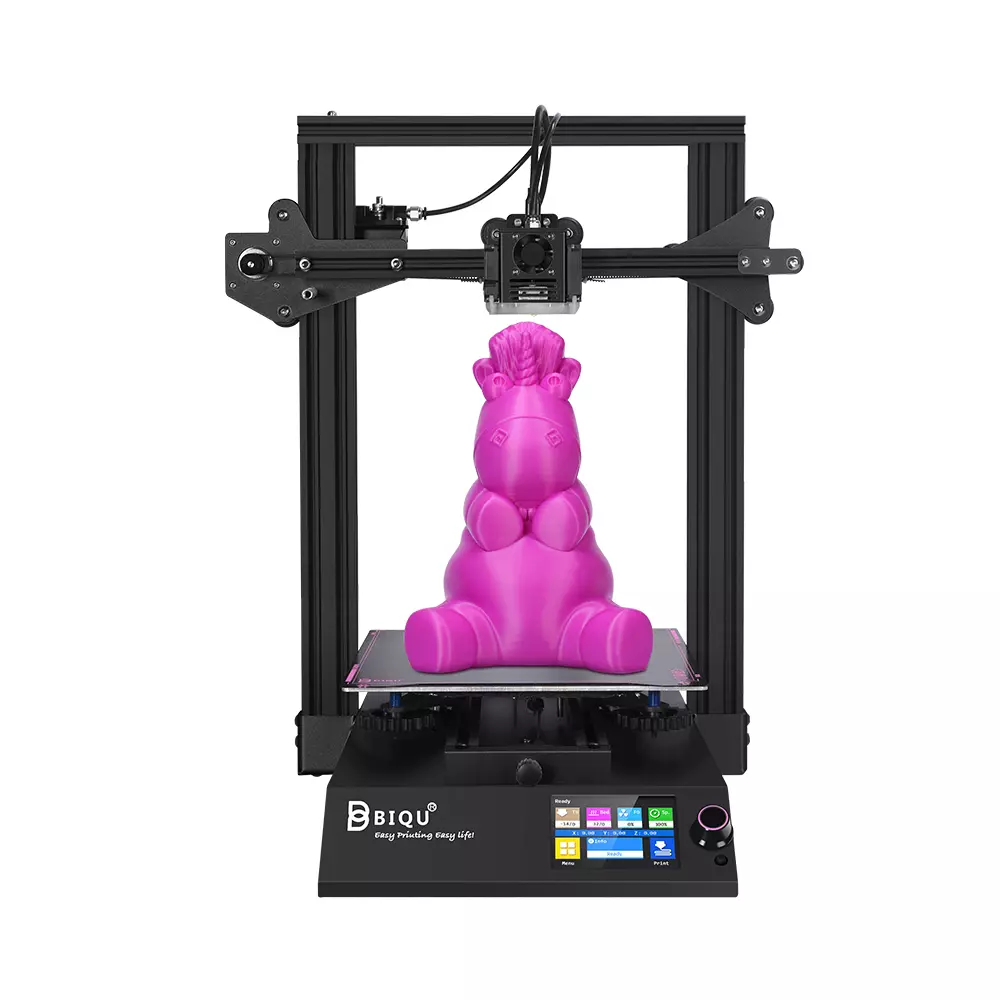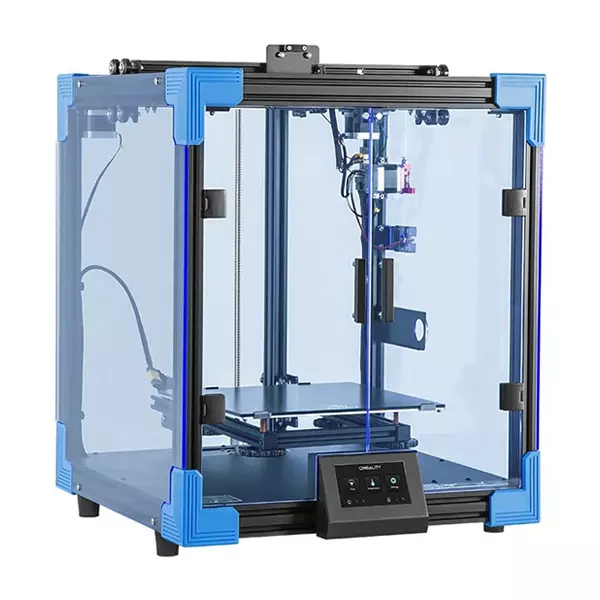Compare BIQU B1 vs Ender 6
Comparison between the best 3D printers
Choose the best 3D printer at the best price. The cheapest 3D printers are here.
Buy a 3D printer here with 3D Fila.
 |
 |
|
| Model | BIQU B1 |
Ender 6[BUY Ender 6] |
| Printing Material | Filament | Filament |
| Buy Filament for BigTreeTech BIQU B1 | Buy Filament forCreality 3D Ender 6 | |
| Estimated price | $269,00 | $499,00 |
| Manufacturer | BigTreeTech | Creality 3D |
| Release Year | 2020 | 2020 |
| Print Volume [mm] | 235x235x270 | 250x250x400 |
| Printer Size [mm] | 412x402x492 | 495x495x650 |
| Weight [kg] | 8,00 | 22 |
| Power Loss Recovery | YES | YES |
| Enclosed printer | NO | YES |
| Bed Leveling | Manual | Manual |
| Filament End Sensor | YES | YES |
| Bed type | Heated | Heated |
| Power supply system | Bowden | Bowden |
| Standard nozzle | 0,4 | 0,4 |
| Maximum Nozzle Temperature [°C] | 250 | 260 |
| Maximum Bed Temperature [°C] | 100 | 100 |
| Maximum printing speed [mm/s] | 100 | 150 |
| Filament holder | YES | YES |
| Camera for supervision | NO | NO |
| Recommended filaments | PLA, TPU, ABS, PETG | PLA, TPU, ABS, PETG |
| Recommended slicers | Cura, Simplify, Slic3r | Cura, Simplify, Slic3r |
| Maximum Resolution [mm] | 0,1 | 0,1 |
| Processor | 32 Bits BTT SKR V 1.4 | 32 bits |
| Display | Touchscreen TFT 3,5'' | Touchscreen TFT 4,3'' |
| Power Supply | 24V / 360W | 24V / 504W |
| Connectivity | SD / USB | SD / USB |
| Operating systems | Windows, Mac, Linux | Windows, Mac, Linux |
| Date of registration in the system | 2021-04-14 | 2021-04-15 |
| Release date | 2020 | 2020 |
| Extra features | The BIQU B1 is an advanced 3D printer with a silent 32-bit BTT SKR V1.4 motherboard and ARM Cortex-M3 CPU, offering DIY interfaces (I2C, SPI, WiFi) and dual Z-axis. Its dual BTT B1 TFT35 V3.0 operating system allows real-time monitoring and multiple printing modes, including G-code visualization effects. It stands out for its BIQU SSS (Super Spring Steel), ensuring easy model adhesion and simplified removal, with the possibility of using it on both sides. It includes a filament sensor, automatically pausing printing in case of filament breakage. The multicolored RGB lights integrated into the hotend allow you to view the printing status even at night. Additional notes include the need for a BIQU-specific Type-C cable and extra interfaces for smart filament sensor and BL Touch. | The Creality Ender 6 stands out in the world of 3D printers with its CoreXY system, offering fast and high-quality prints. With a robust design, it has acrylic panels to protect against air currents, optimizing the printing of materials that require higher temperatures. It features a generic Creality hotend, effective up to ~240°C. Its differentials include 10mm GATES belts, promoting stability at high speeds, and a 360W power supply for reliable performance. The machine also has an intuitive user interface through a 4.3-inch touchscreen. |
| Support for multiple colors and materials (AMS and CFS) | NO | NO |
Notes * |
||
| Cost-benefit | 7 / 10 | 7 / 10 |
| Hardware | 2 / 10 | 2.5 / 10 |
| Tela | . | . |
| Print volume | 3 / 10 | 4 / 10 |
| Performance | 1 / 10 | 1 / 10 |
| [BUY Ender 6] |
Conclusion |
| In comparing the BIQU B1 and Creality Ender 6 3D printers, several key factors come into play, including price, build quality, features, and printing capabilities. The BIQU B1 presents itself as a budget-friendly option, making it an attractive choice for beginners and those who want to experiment with 3D printing without a significant financial commitment. It offers advanced features for its price point, such as a dual Z-axis, silent operation, and a flexible print bed, which enhances usability. Its print volume is slightly smaller than the Ender 6, but it is still adequate for many common projects. On the other hand, the Ender 6, while considerably more expensive, is equipped with a CoreXY system that allows for faster and more efficient printing. Its enclosed design is another notable advantage, providing better temperature control, essential for printing with materials that require stable thermal conditions. It also has a larger printing volume, making it suitable for more extensive projects. Both printers include essential features such as power loss recovery, a filament sensor, and heated beds, and they support a variety of common filaments. However, in terms of performance speed, the Ender 6 significantly outpaces the BIQU B1, appealing to users who prioritize efficiency in their printing processes. Ultimately, the choice between these two printers hinges on individual needs and budget considerations. The BIQU B1 is ideal for those entering the 3D printing realm or for hobbyists seeking an economical model with good features. In contrast, the Ender 6 is better suited for more serious users who value speed, build quality, and the ability to manage a wider range of print materials. Therefore, consumers must weigh their specific requirements against the strengths and weaknesses of each model to select the best 3D printer that meets their needs. |

